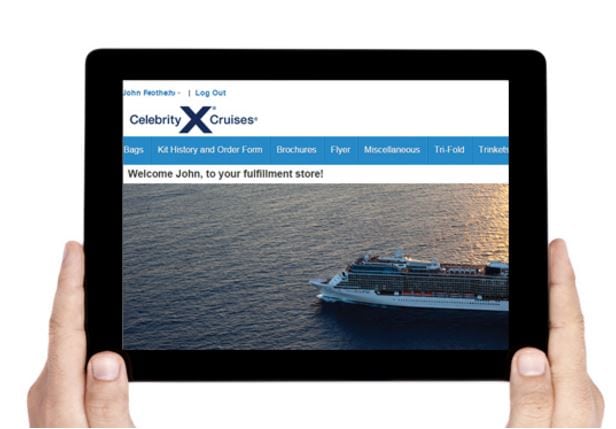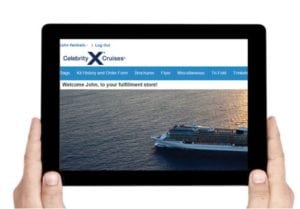
 We’re very proud of our fearless leader and company president Doug Grant. During this year’s GRAPH EXPO, held in Orlando, Florida, Doug was the Keynote Speaker at the Sunday morning Executive Outlook session. His presentation was entitled, “Winning the Omni-Channel Challenge: Inside Westamerica’s Journey.”
We’re very proud of our fearless leader and company president Doug Grant. During this year’s GRAPH EXPO, held in Orlando, Florida, Doug was the Keynote Speaker at the Sunday morning Executive Outlook session. His presentation was entitled, “Winning the Omni-Channel Challenge: Inside Westamerica’s Journey.”
In Doug’s presentation he used the illustration of a rudder on a ship. When a ship is anchored, you can turn that rudder all you want and it won’t have any impact. But once your ship is moving forward, you can use that tiny little rudder to guide your ship in the direction you want it to go. In the same way, if we’re standing still in business, we’re going nowhere fast. But if we simply move forward – even slowly at first – we can begin to make small adjustments that may one day have a huge positive impact on our future.
One way we have “simply moved forward” is by accepting the Omni-Channel Challenge. We’ve made adjustments that have had a positive impact on our future. This includes implementing forward thinking marketing strategies. By doing this we’re able to help our clients successfully market their products and services to their clients.
Changing with the Times
Here’s an example of an adjustment we made that has had a positive impact for both our clients and ourselves. Forty years ago we offered direct mail as a good way to reach out to customers. Today, if you understand how to harness the marketing capabilities of both print and online media, direct mail is still a great way to reach people. We know how to use print media to lead current and potential customers to a website. Or visa versa, we can create an online website that can push users to request print collateral.
Direct Mail Done Right
A mail piece printed on heavyweight paper stock or printed using dimensional printing techniques can make your direct mail stand out. The truth is 71% of consumers interviewed said that the print and paper quality of a mail piece impacts their decision to open and read their mail.
And, once the consumer has opened their mail, it’s imperative that the information inside the envelope be relevant to the individual. The proper use of data can ensure that the offer you are making is relevant to the consumer. Research shows that 44% of consumers immediately discard direct mail if it isn’t relevant. Yet 80% say they are more likely to open their mail if it is personalized.
Google Uses Direct Mail
Google has researched the interaction between the consumer and the stimuli that causes the consumer to begin a search to lean more about a product or service. Google calls it ZMOT, the zero moment of truth. It’s the moment when the consumer sees a poster, an outdoor billboard or a direct mail piece and begins to think, “I-want-to-know,” “I-want-to-go,” “I-want-to-do,” or “I-want-to-buy.” This is why Google spends millions of dollars every year creating, printing and mailing direct mail pieces to targeted businesses.
Winning the Omni-Channel Challenge
Since opening the family business, once known as “the Printing Company,” back in 1975, until today, Westamerica Communications has grown by focusing on the needs of our clients. And, it’s by understanding data’s increasing central role in all audience engagements, either in print or online, that we are able to create and execute marketing strategies that increases our client’s success rates.
As Doug said during his Sunday morning Executive Outlook session, “our ship is moving. We’re different today than we were yesterday. We’re still figuring things out, and we’re still turning our rudder to respond to new information and new challenges.”


















